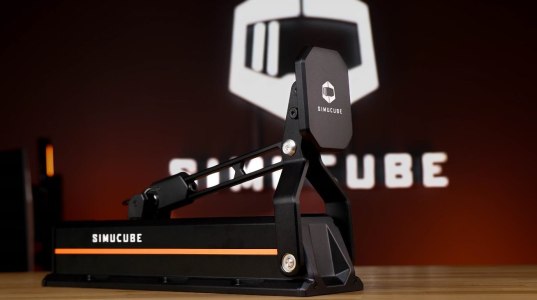Ok, so I'm going to expand my rig with a motion system. I already have a TrakRacer TR160 rig with bass shakers.
What first caught my eye, was the summer sale for TrakRacer's own D-Box actuator system. But even at a summer sale, the price tag was a bit steep, at €5500 plus shipping and import taxes. This would end up at almost €8000, which for me is considerably more than it's worth.
Then, some further reading brought me to the DIY SFX-100, which comes in at quite a different price. But still, getting all the parts locally is next to impossible, so the only real option for me would be ordering a complete kit from AliExpress, which would come in at around €2000 plus taxes, ending up at €2500, which is more what I was aiming for. I have a 3D printer and like DIY projects, so the task of building, setting up and maintaining this kit doesn't really scare me. What scares me a bit, is that I would pay €2500, knowing that nobody will replace the motors if they go bad in three months, basically sending me back to square one, minus the €2500.
After searching for similar DIY options, I found the eRacing Lab RS Mega+, at €2400 plus shipping, giving me a total cost of about €3500, which is just within my budget. These seem like very fine units, giving me many of the same advantages as the SFX-100 would, and they are controllable by SimHub, which seems nice. They also come complete, and with a three year warranty from a seemingly serious business. And if I decide to sell the whole system, the resale value on these will obviously be much higher than some homemade SFX-100 units. So I reckon they're worth the extra €1000 for me.
The final question remains: Are there other options out there, which I have missed, that will do pretty much the same as the SFX-100 or the RS Mega+? I would say that €2500 plus shipping and taxes is at the top of my budget.
(And yes, I have tried searching, reading, googling etc. without finding a decisive answer to this specific situation.)
What first caught my eye, was the summer sale for TrakRacer's own D-Box actuator system. But even at a summer sale, the price tag was a bit steep, at €5500 plus shipping and import taxes. This would end up at almost €8000, which for me is considerably more than it's worth.
Then, some further reading brought me to the DIY SFX-100, which comes in at quite a different price. But still, getting all the parts locally is next to impossible, so the only real option for me would be ordering a complete kit from AliExpress, which would come in at around €2000 plus taxes, ending up at €2500, which is more what I was aiming for. I have a 3D printer and like DIY projects, so the task of building, setting up and maintaining this kit doesn't really scare me. What scares me a bit, is that I would pay €2500, knowing that nobody will replace the motors if they go bad in three months, basically sending me back to square one, minus the €2500.
After searching for similar DIY options, I found the eRacing Lab RS Mega+, at €2400 plus shipping, giving me a total cost of about €3500, which is just within my budget. These seem like very fine units, giving me many of the same advantages as the SFX-100 would, and they are controllable by SimHub, which seems nice. They also come complete, and with a three year warranty from a seemingly serious business. And if I decide to sell the whole system, the resale value on these will obviously be much higher than some homemade SFX-100 units. So I reckon they're worth the extra €1000 for me.
The final question remains: Are there other options out there, which I have missed, that will do pretty much the same as the SFX-100 or the RS Mega+? I would say that €2500 plus shipping and taxes is at the top of my budget.
(And yes, I have tried searching, reading, googling etc. without finding a decisive answer to this specific situation.)












